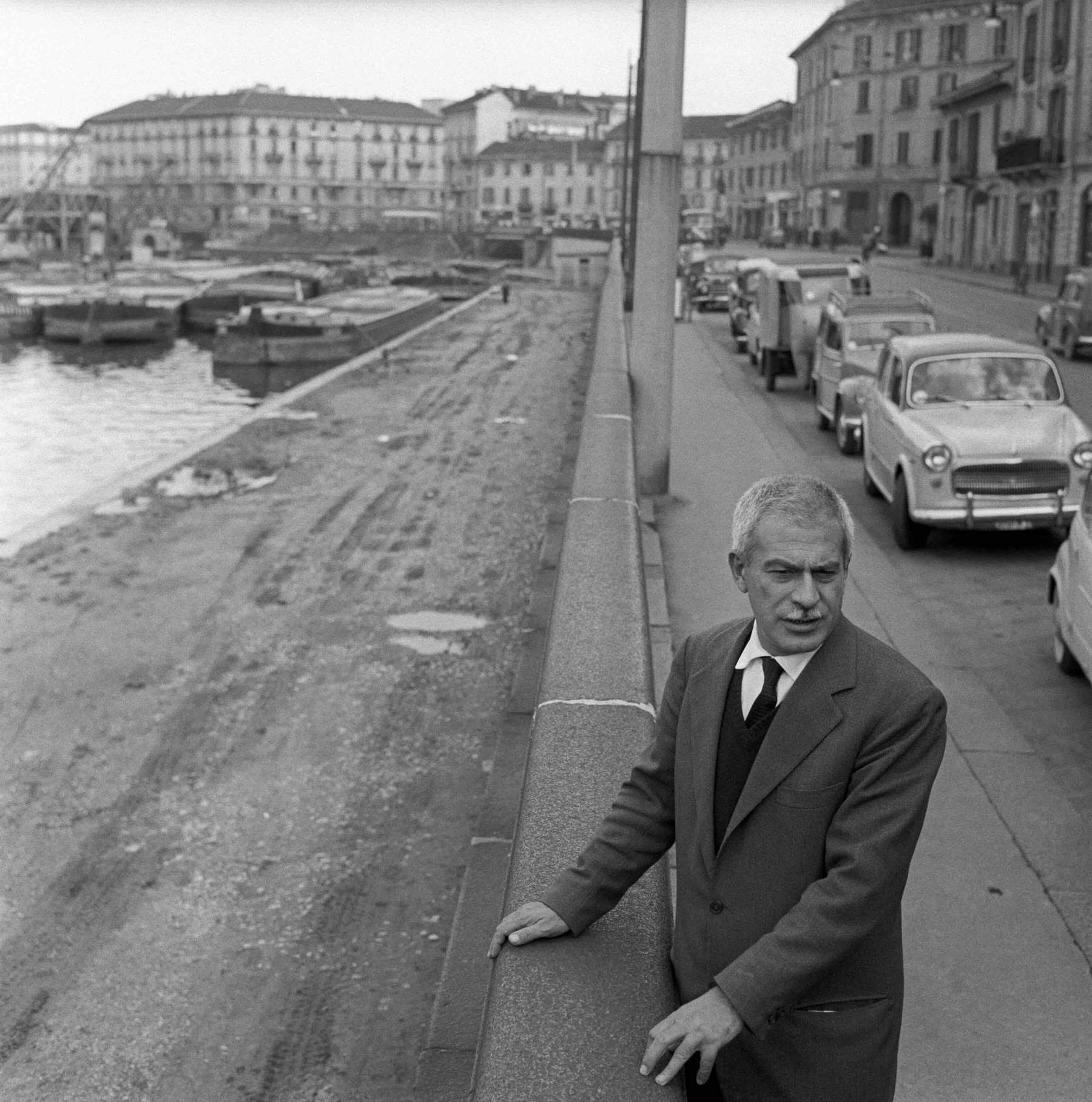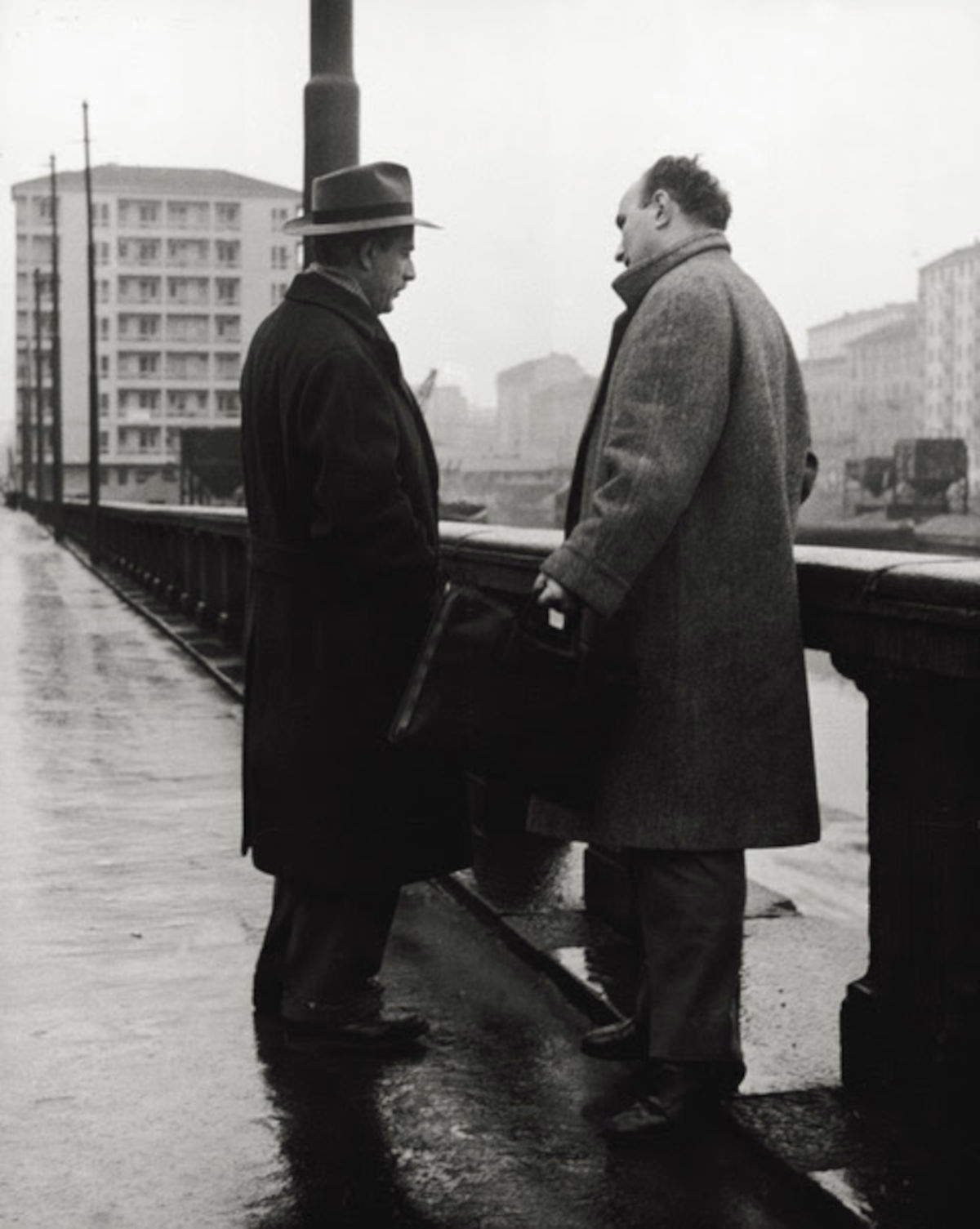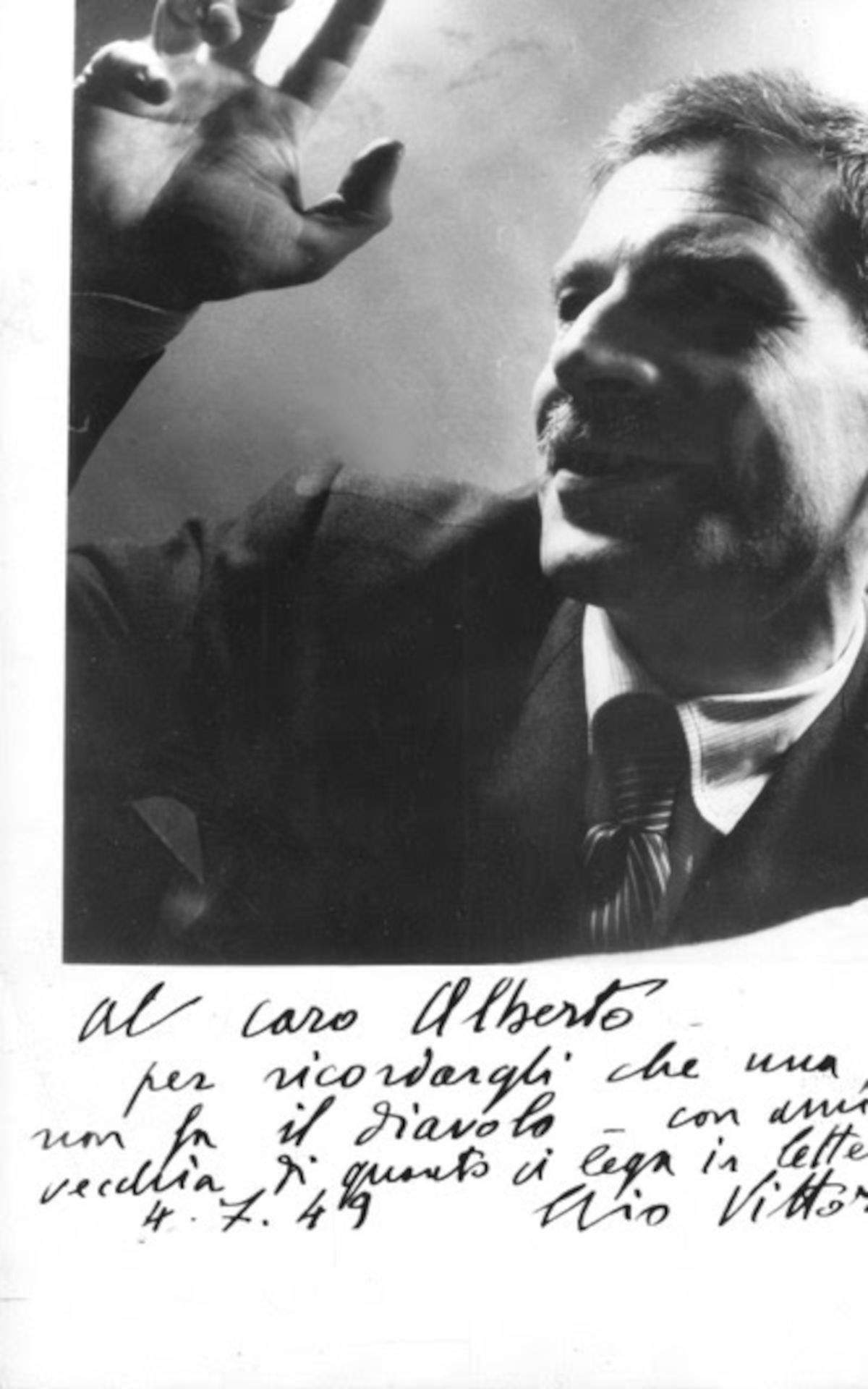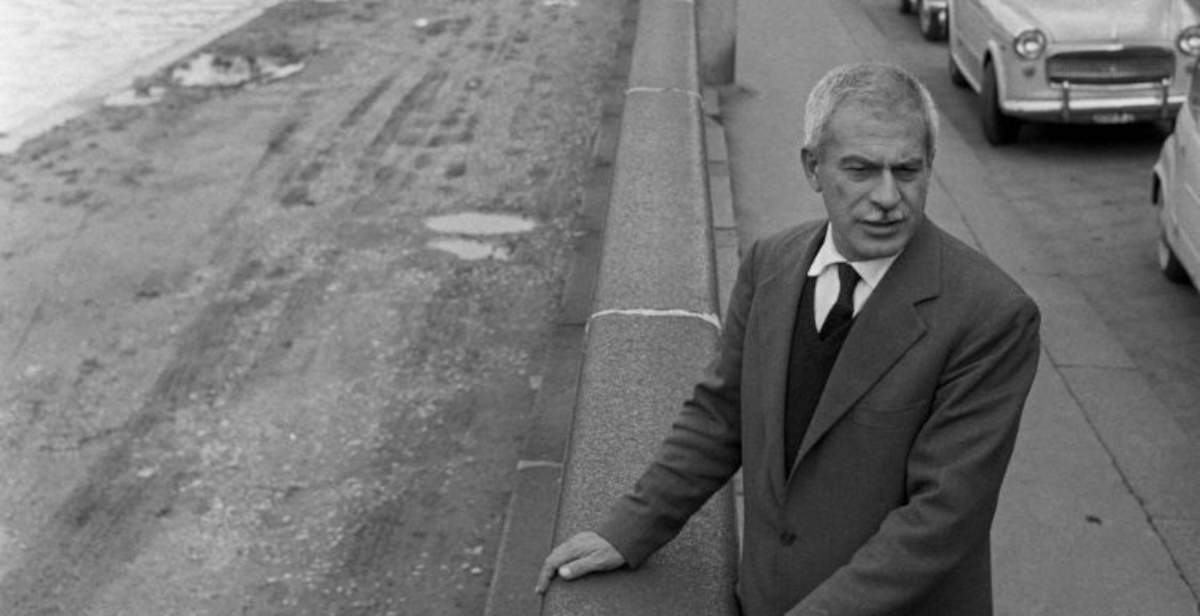From July 14, 2025, to January 18, 2026, the Fabbrica del Vapore in Milan will host Milano città che sale, an exhibition divided into seven episodes curated by Scalpendi. The project, which is distinguished by its serial format, aims to offer a cultural survey spanning some eighty years of the city’s history, bringing into dialogue central figures of Milan’s literary, artistic and theatrical scene with a narrative device never before seen in the exhibition world.
Each episode lasts 21 days and focuses on a key figure or movement from the immediate post-World War II period to the early 21st century. In fact, the exhibition acts as a mosaic that restores Milan’s cultural, social and entrepreneurial development through a plurality of languages and perspectives.
The first episode is dedicated to Elio Vittorini, a leading figure in the literary and publishing world, whose ties with Milan were consolidated starting in the 1930s. The second delves into the case of L’Arialda, a play byGiovanniTestori, which was at the center of a heated public debate due to censorship and content deemed scandalous at the time. This will be followed by in-depth looks at Licalbe Steiner, the Laboratorio di Comunicazione Militante, the art scene of the 1980s, Paolo Rosa and Luisa Spinatelli, each at the center of a monographic display. The exhibition is designed as an episodic experience, borrowing a narrative structure typical of television series and serial literature.

“The original serial format and the innovative use of robotic telepresence,” says Tommaso Sacchi, Councillor for Culture of the Municipality of Milan, “make this exhibition a pioneering path, which finds in Fabbrica del Vapore, a symbolic place of urban creativity, the ideal space to bring together not only very different audiences, but also different artistic and cultural languages that have defined Milan from the 1940s to the present.”
“An exhibition in 7 episodes dedicated to as many capital figures of Milanese culture is a countertrend event because it aims to engage the visitor in the pleasure of research,” says Maria Fratelli, Director Special Projects Unit of the City of Milan and Fabbrica del Vapore. “Each episode tells the life of an intellectual; all together they reveal the system of relationships that animated Milan’s cultural life in the 20th century. Reconstructing this web of knowledge and immersing oneself in it will be as stimulating for the viewer as it was for the individual curators, who are also united by their passion for this city and what it represents in the country system and the world. The technology that accompanies the exhibition is a virtuous tool capable of making it inclusive, and Fabbrica del Vapore is proud of this experimentation.”
The project is the brainchild of Scalpendi, a publishing house that built the exhibition together with a network of public and private institutions, including the APICE of the University of Milan, the Gramsci Foundation of Rome, Casa Testori, the Studio Origoni Steiner Archive and numerous personal and photographic archives. The collaboration made it possible to create a rigorous scientific itinerary, thanks to the contribution of expert curators and the selection of original materials, including drawings, photographs, historical documents, manuscripts and sculptural works.
Making the project even more innovative is the use of robotic telepresence. Indeed, thanks to Double 3 technology, it will be possible to remotely access the exhibition through a robot equipped with a screen, microphones, speakers and motion sensors. The device allows visitors, including those who cannot physically travel to the Fabbrica del Vapore, such as long-suffering patients, people with mobility disabilities, prisoners, residents in isolated areas or elderly people in care facilities, to independently explore the exhibit from anywhere in the world.
Unlike traditional virtual tours, robotic telepresence allows direct interaction: users can independently choose their own path within the exhibition space, personalizing the experience and actively participating in the visit. The introduction of this technology represents an experimental step for the entire museum sector.

The installation was designed by Paolo Volpato and Monica Vittucci in collaboration with Scalpendi. The intervention is distinguished by the consistent integration of display elements such as tables, information panels and signage, with the aim of providing a clear and fluid experience while maintaining a high level of scholarly rigor. Particular attention was paid to the exhibition tables, custom-made by EFGROUP of Bologna, which allow complete enjoyment of the works from multiple angles. The graphics for the entire project were entrusted to the Dardanelli studio in Calenzano, which took care of the visual identity with speed and precision.
Each episode addresses a specific theme, but all are connected by a common thread that focuses on the city of Milan as a meeting place for intellectual practices, civic engagement and formal innovation. The exhibition aims to restore to the public the web of relationships that characterized Milanese culture in the 20th century, encouraging an engaging approach to historical research.
In the first episode, Elio Vittorini. Design and Literature, curated by Fabio Vittucci, the author’s relationship with the city is analyzed. Vittorini, born in Sicily, first came to Milan in 1933, an experience that marked a decisive turning point for him. The city became a stimulating environment for the writer, where he could combine creativity and industrial modernity. The bond was strengthened in 1939, when he began collaborating with Mondadori, resulting in a series of crucial publishing projects.
“If I ever write an autobiography, I will tell of the great importance that trip to Milan had for me. I returned from it in love with places and names, with the world itself, as I had been other times only in my childhood” (Elio Vittorini, Conversations in Sicily, introduction by the author, 1941).
“First of all, it is city: when you are really in it, you think that the world is covered with houses; and then it may happen that you find some countryside in the middle of a neighborhood, that you find a place with a little church just from a field on the edge; it covers the world and is full of the world, of all the natural possibilities of the world (except mountains, which I detest). I will not be more peaceful if I do not know that I am in there, as a Milanese” (from a 1939 letter to Cesare Pavese, in Lettere1932-1943, edited by Dante Isella, Einaudi, 1990).

The second episode, Giovanni Testori and the Secrets of Milan: the Case of the Arialda, edited by Federica Mazzocchi, focuses on one of the most discussed works of Italian theater after World War II. Written by Testori and directed by Visconti, L’Arialda debuted in 1960 in Rome. The play deals with issues such as homosexuality, censorship and the role of the judiciary, provoking wide public debate. In Milan, the play was blocked after only one performance, the victim of a judge’s order that had already censored Rocco e i suoi fratelli, also inspired by Testori’s stories.
The other episodes will delve, in chronological order, into the graphic and communicative work of the Licalbe Steiner duo, the artistic and political practices of the Laboratorio di Comunicazione Militante in the 1970s, the 1980s cultural scene in Milan (known as “Milanottanta”), Paolo Rosa’s multimedia research and Luisa Spinatelli’s scenographic reflection.
The event will take place at the Sala delle Colonne of the Fabbrica del Vapore. Visiting hours are Monday through Friday from 2 p.m. to 10 p.m. and on weekends from 11 a.m. to 7 p.m. Single tickets, subscriptions and Open formulas are available. Those who cannot physically go to the exhibition can opt for the robotic telepresence visit. Each episode will also be accompanied by thematic workshops for children.
 |
| At Milan's Fabbrica del Vapore, the first episodic exhibition that can also be visited in robotic telepresence |
Warning: the translation into English of the original Italian article was created using automatic tools. We undertake to review all articles, but we do not guarantee the total absence of inaccuracies in the translation due to the program. You can find the original by clicking on the ITA button. If you find any mistake,please contact us.